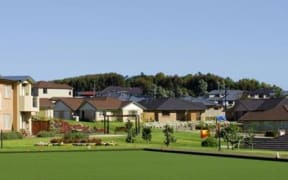A shortage of retirement village units is looming as the industry struggles to keep up with demand, particularly in Auckland.
And a possible overhaul of the sector's rules is also making operators wary.

Photo: 123RF
A report by global real estate investment firm JLL indicates 422 retirement villages were offering a total of 36,500 units, but development forecasts falling well short of demand.
JLL NZ managing director Todd Lauchlan said there had been strong growth recently but the industry was struggling to keep up with demand and was being overshadowed by a review of the sector's regulatory framework.
"It is important that calls for a regulatory review of retirement villages do not delay the delivery of new units, as the benefit of a delivered pipeline will be felt beyond this sector of the housing continuum," he said.
Retirement Commissioner Jane Wrightson recently called for an overhaul of the rules governing the sector, which Lauchlan said was holding up investment decisions.
It estimated the number of retirement village units had risen by 67 percent to more than 36,000 units, in the nine years since it had been keeping track, accommodating about 47,000 residents.
"This tells us that one in every seven New Zealand residents over the age of 75 is choosing the lifestyle offered by a retirement village," he said.
"If we project forward 12 years to 2033, based on this same level of demand, we see the need to accommodate a further 34,000 residents, which will require an additional 26,000 retirement village dwellings to be built."
There are currently 211 villages in the development pipeline, including the expansion of 124 existing villages and 87 new developments, promising just under 21,500 new units.
He said half of the developments would be done by the industry's 'Big Six': Ryman, Metlifecare, Summerset, Oceania, Bupa, and Arvida.
"These pipeline figures are by no means guaranteed - dependent on a number of factors such as market conditions, site availability and resource consent approvals," Lauchlan said.
"With only 11,000 new units currently green-lighted for construction, we could still be facing a shortfall of 15,000 come 2033."
He said the shortfall would have knock-on effects, particularly in Auckland.
"Failing to match demand in Auckland will put further pressure on an already tight housing market, tying up stock and potentially encouraging further residential development sprawl to compensate."
The report also highlighted concern about the supply of aged care facilities, with 38,500 beds in an estimated 673 facilities, which included rest homes, hospitals and dementia beds.
"The care sector continues to face headwinds and we anticipate that cost pressures will continue in some regions," the report said.





